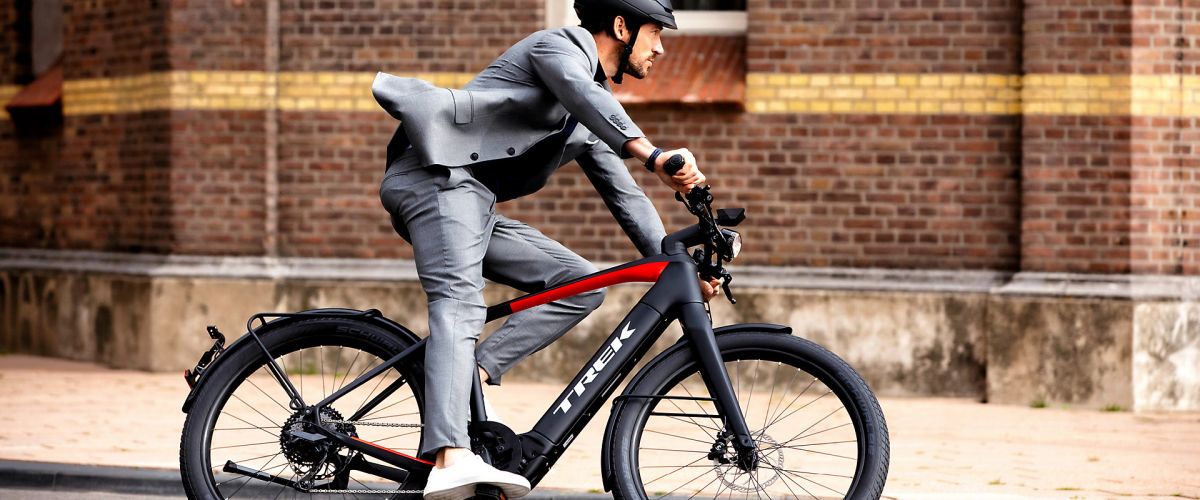
Fancy a bike for less than the normal retail price AND pay in instalments? Bit of a no-brainer, right? Well, this is exactly what the Cycle To Work Scheme allows you to do.
Introduced in 1999, the scheme aims to encourage employees to commute on their bike for environmental, traffic congestion and health reasons. It also enables companies to demonstrate that they’re looking after the wellbeing of their people.
Even more good news is that the maximum bike value – thought to be £1,000, though the rules were a bit woolly – has been scrapped, as has the exemption for e-bikes. So, you can get your dream racer, MTB or electric bike for much less and pay over a period of time. It’s like an interest-free loan, only much, much better.
Obviously, you are supposed to use the bike for commuting – and we are massive supporters of getting to work this way – but in reality, you’re not going to be followed about by people from Her Majesty’s Revenue and Customs, keeping track of your commuting hours versus time on the trails. Also, your employer owns the bike until you pay the final ownership fee, which is based on the “fair market value” of it at the end of that period.
You can use the scheme for accessories, such as helmets and bags, though these have to be ostensibly for your commute. So, no full face masks, for example. If you don’t have a lock, we strongly advise that you get one along with your bike as you’re liable for the Cycle To Work payments, even if it gets stolen while you’re paying it off.
How does the Cycle To Work scheme work?
This is the dull-but-worthy stuff-you-need-to-know section. If you just want to see what you can get and for how much, carry on scrolling down. But, honestly, you should probably understand what happens with Cycle To Work before you commit.
This is a salary sacrifice scheme for people aged 18 and over where the monthly payment for your bike is taken out before tax and National Insurance are deducted. Because your contribution is taken before tax, you pay off more per month for less. So, for a bike costing £1,200, £100 is taken from your salary every month but it only costs you £68 because the other £32 would have normally gone to the tax man, right? So, you pay 12 instalments of £68 and a final ownership fee of £300, totalling £1,116. If your salary puts you in the higher tax brackets, you actually save more but you get the gist.
Show me the bikes
Let’s apply this to a couple of real bikes.

So, you earn £2,000 before tax every month and you’d like a Trek X-Caliber 7, which costs £900 at the normal spec. If you pay over 12 months, that’s a £75 salary deduction every month (but only costing you £51) and you pay about £63 at the end to take ownership of the bike. That’s a saving of £288 on the overall cost of your beautiful new machine.
Some Cycle to Work providers allow you to pay the ownership fee after four years, with the main contributions still paid over the first 12 months. This is cheaper as the “fair market value” you pay at the end of the period is less than it would be after one year as the bike is older. It does mean the bike won’t be yours until this is paid but if you’re not changing your employer, that’s not an issue.

Now you earn £3,000 per month – congratulations on the promotion – and you want a Trek Powerfly Sport 7 Equipped, which has a normal retail price of £4,700. Your monthly pre-tax contribution is £391.67 – costing you £266.33 – meaning the real cost to you is £3,195.95. If you pay the ownership fee after four years, it’s £329, making a total of £3,524.96 for your lovely £4,700 bike. If you were to pay the ownership fee after 12 months, it would be £1,175, a total of £4,370.96.
I’m interested. What do I need to do?
Firstly, find out which scheme your employer is enrolled in and therefore where you can buy your bike from. We work with a number of Cycle To Work providers, including cyclescheme.co.uk, cycleplus and Bikes for the NHS.
Then you need to speak to your HR department and request a certificate, bring it to us and we’ll redeem it against the cost of your bike and accessories. The salary sacrifice commences from your next pay packet
To get a bike on the scheme, your employer needs to sign up to a provider. If they’re unsure about how to do this, send them to us and we’ll help.
Happy shopping!